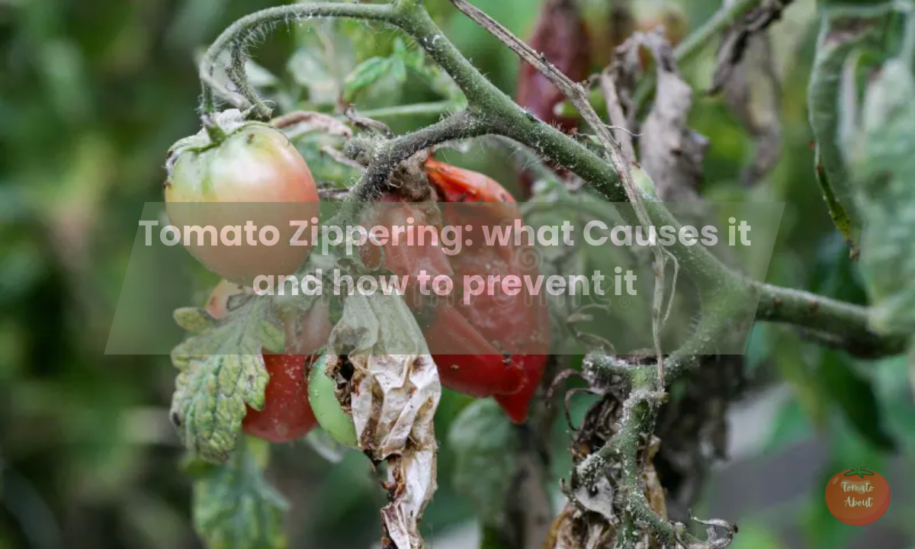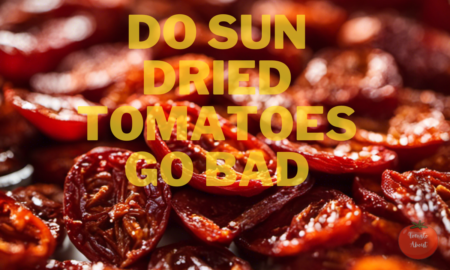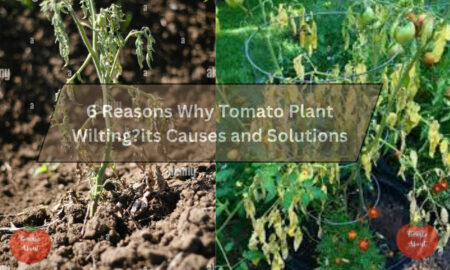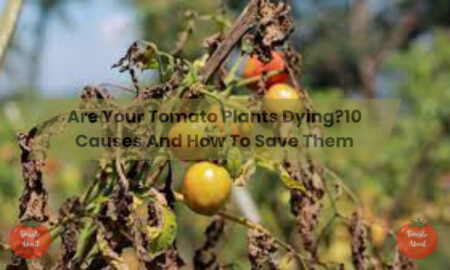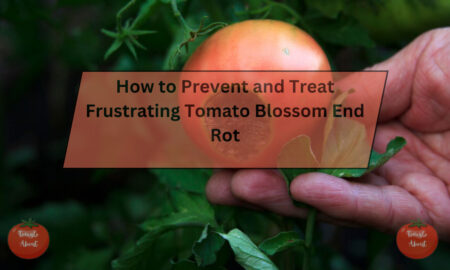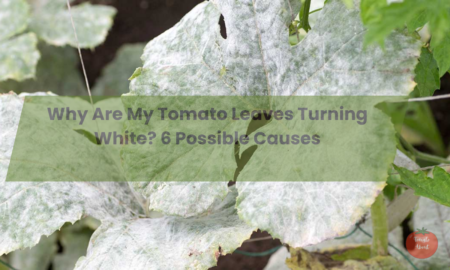As a passionate tomato grower, I’ve seen my fair share of frustrated gardeners lamenting unpleasant scars on their lovingly tended fruits. These zipper-like blemishes are known as zippering – a harmless but unsightly disorder that commonly plagues tomato plants.
Through trial and error in my own garden, I’ve uncovered some of the mysteries behind zippering, and small tricks to reduce its occurrence in a tomato patch. Read on to learn all about this peculiar phenomenon!
What Exactly is Tomato Zippering?
You likely won’t hear zippering discussed much among tomato growers. But if you grow enough plants, you’ll inevitably come across this defect in some fruits.
Zippering causes jagged scars on tomatoes that look similar to an open zipper. These scars usually form on the blossom end of the fruit where the anthers were once attached. An anther is the part of the stamen containing pollen.
In a zippered tomato, the anther remains stuck to the developing fruit instead of falling off naturally as it should. As the fruit expands, the stuck anther is forcibly ripped off. This forms an unsightly scar extending from the bottom blossom scar upward.
Sometimes an anther will only cling to one small section, forming a short scar. But it can stick to a larger area, resulting in long gashes up to a couple of inches. These scars may simply be shallow marks on the skin. But they often cause deep grooves and holes in severe cases.
While alarming, these gaping holes and scars are only skin-deep and do not actually damage the flesh inside. The flavor, texture, seeds, and internal structure remain perfectly healthy.
How Does Zippering Differ From Other Tomato Fruit Issues?
At first glance, zippering may resemble other common tomato fruit defects. But if you look closely, you can distinguish a few differences:
- Cracks/Splitting: Cracks and splitting cause similar ragged marks, but they originate from rapid moisture changes, not attached anthers. Cracks appear randomly over the entire fruit surface rather than extending from the bottom blossom scar.
- Catfacing: Catfacing also causes deep scars and holes, but they occur on the top shoulder of the fruit, not the bottom. Catfacing is caused by cool weather during flowering.
- Blossom End Rot: This causes a sunken leathery black patch on the bottom of the fruit, which may look similar to a zipper scar. But blossom end rot is caused by calcium deficiency.
- Scarring: Insect or disease damage can also cause scars, but they usually appear more randomly than a zipper scar. The surrounding tissue may also appear damaged.
What Causes Zippering in Tomato Fruits?
While zippering is common, experts aren’t entirely sure what causes it. There are a few leading theories behind why the anthers stick to developing fruits:
- Cool Temperatures: Tomato plants thrive in warm weather around 70-85°F. When temperatures drop too low, pollen production and viability suffer. Cool weather may prevent the anthers from properly detaching.
- High Humidity: Excessively humid conditions can make pollen overly sticky. This increases the chance of others adhering to fruits.
- Poor Air Circulation: Still air prevents pollen from dispersing. Breezes also help dry moisture that may cause stickiness.
- Varietal Susceptibility: Some tomato varieties seem more prone to zippering than others. Those adapted to warmer climates tend to fare better.
While these explanations seem logical, there is still no definitive cause identified. However, gardeners have found some ways to potentially decrease zippering based on these theories.
How to Prevent Zippering on Tomato Fruits
Preventing zippering can be difficult since the exact cause is unknown. But some strategies may help reduce your risks:
Choose Zipper-Resistant Varieties
One of the best ways to avoid zippering is to select tomato varieties that can better tolerate cool conditions during critical flowering and fruit set stages.
Certain tomatoes like Celebrity, Glacier, and other cold-tolerant hybrids are genetically better equipped to deal with suboptimal temperatures. They can continue proper pollination and fruit development even if the weather turns cool.
Heirloom varieties on the other hand are much more prone to zippering in less than ideal conditions. Their lack of hybrid vigor makes them more sensitive to temperature fluctuations during pollination.
If you live in an area with shorter summers or cool nights, switching to zipper-resistant hybrid tomatoes can drastically reduce fruit scarring issues. It’s a simple solution that can save you much frustration down the line!
Site Tomatoes in Warm, Well-Ventilated Areas
Paying attention to microclimates in your garden is another way to prevent zippering. Avoid planting tomatoes in low spots or areas prone to frost and cool air pooling.
Instead, choose locations that receive plenty of sun and warmer airflow. Space plants generously, at least 2-3 feet apart, to encourage good air circulation.
Reducing humidity at the leaves by improving airflow makes for a less hospitable environment for diseases. It also prevents flowers from sticking together, reducing zippering risk.
Time Planting Carefully
In regions with shorter growing seasons, timing is important to avoid zippering issues.
Start tomatoes indoors or in a greenhouse 4-6 weeks before your last expected frost date. Transplant them out once day and night temperatures have thoroughly warmed up.
Protect young plants with season-extending covers like hot caps or cloches if cold snaps are forecasted. This ensures plants are mature enough to flower and set fruits during optimal warm conditions.
With careful timing and protection, you can avoid frustration and enjoy a zipper-free tomato harvest, even in colder climates!
Even if you follow all these tips, you’ll likely still get some zippering. However, these measures should help decrease the severity and number of affected fruits.
Prune for Air Circulation & Exposure
Pruning improves airflow and exposure to reduce zippering risk. Remove suckers and inward-facing leaves to open up the plant. But avoid over-pruning, as excessive foliage removal can stress plants. Maintaining good airflow reduces humidity at the leaves, lowering the chances of flowers sticking.
It also prevents contact between developing fruits and flowers above, reducing zippering risk.
Stake Plants to Prevent Contact Between Flowers & Fruits
Staking keeps plants upright and separated from each other. Use cages, trellises, or poles to support plants. This reduces the risk of developing fruits touching blooms above by maintaining proper spacing. Staking also prevents slumping, keeping fruits and flowers in separate zones. By managing plant growth, you lower the odds of zippering issues.
Pick Fruits Promptly
Prompt harvesting of mature fruits is key. Pick zippered tomatoes as soon as they ripen rather than leaving them on the vine. Quick picking prevents scars from expanding further. It also limits pests and diseases which may invade existing zippering cracks and holes. Stay vigilant with harvests for a healthy, appealing tomato crop.
Are Zippered Tomatoes Safe to Eat?
The good news about zippering is it’s purely cosmetic – the flavor and texture inside are unaffected! Just remove any damaged bits.
While unsightly, fruits with shallow scars or lesions can still be harvested and eaten. Large holes increase vulnerability to pests and diseases, however.
Blemished tomatoes are perfect for cooked dishes like sauces, salsas, stews, and preserves. The skins slip right off!
When to Worry About Tomato Scarring
While usually harmless, deeply scarred fruits can spell trouble. Watch for:
- Cracks/holes expose the inside of the tomato. These provide pest and disease entry points.
- Catfacing – swollen scars from cool weather stress during flowering. Edible if the flesh is undamaged.
- Concentric cracking around the stem, signaling uneven soil moisture. Harvest cracked fruits promptly.
- Scars with discolored tissue or mold. Discard diseased fruits to avoid spreading spores.
Minor zippering requires no action. Remove damaged areas and use the good flesh as usual. Take notes to modify care for next year.
What to Do With Zippered Tomato Fruits
When zippering strikes, don’t despair. These ugly fruits are still just as delicious as perfect-looking ones!
Simply cut out any deep holes or cracks that may allow pests inside. This removes the damaged tissue while retaining the healthy flesh.
Chop off the catfaced blossom end for a smooth base. Then use zippered tomatoes anywhere you’d use fresh ones. Slice them up for salads, sandwiches, bruschetta, or snacking. Dice, crush, or puree for sauces and soups.
For minimal waste, preserve zippered tomatoes. Roast and freeze whole or in chunks, or can them into sauce, juices, or salsa. The skin sloughs off during cooking or processing anyway.
While zippering may be unsightly, remember it’s purely cosmetic. Don’t let those ugly scars stop you from enjoying the flavorful fruits of your labor! Just take notes to hopefully prevent or reduce this harmless defect next season.
Frequently Asked Questions
Q: Why are my tomato flowers falling off without forming fruit?
A: Several issues can cause tomato flowers to drop before setting fruit, including night temperatures being too low, extreme heat, moisture stress, and poor pollination. Ensure optimal growing conditions and aid pollination by gently shaking plants to promote fruit set.
Q: How do you fix catfacing deformities on tomato fruit?
A: Unfortunately catfacing scars are not reversible once fruit has set. To prevent it, maintain even soil moisture, avoid temperature fluctuations, and use catface-resistant varieties like Defiant and Mountain Pride.
Q: What causes the individual segments to bulge out on tomatoes?
A: Tomato locule compaction causes fruits to appear segmented and misshapen. It is caused by cool weather stress disrupting pollination. Using resistant varieties and protecting plants from temperature swings can prevent issues.
Conclusion
I hope this demystifies the causes and solutions for zippering in tomato patches. While certainly frustrating, don’t let it discourage you! Instead, use it as a lesson for modifying care next season.
With observation and practice, gardeners can still produce bountiful harvests of flavorful fruits – with minimal ugly zippering scars. Don’t fret over a few blemished tomatoes – just take steps to prevent issues next year.
The satisfaction of harvesting beautiful, scar-free tomatoes is well within reach. Armed with this knowledge, you now have the tools to make that tomato-growing dream a reality!

